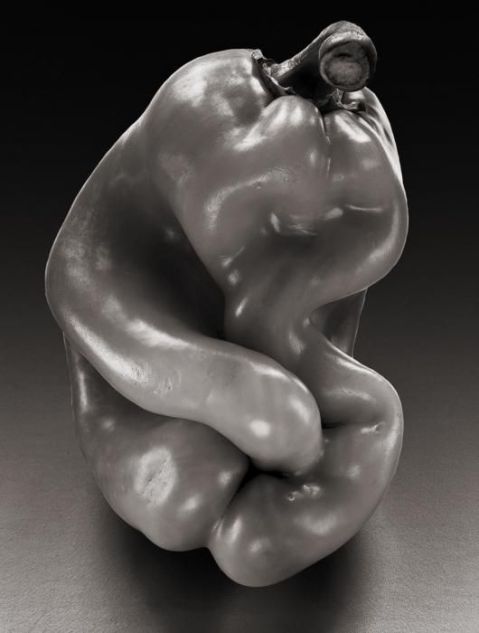A Response to Edward Weston’s Photography for Slow Art Day
13, April 2015 § Leave a comment
by Liz Carson
In both painting and photography the direction of the light that an artist chooses sets the intention of expression. Directional light with a raking effect from the side gives a graphic quality, flattening the form. It lends a graphic two dimensional quality to the work. On the other hand ambient light, which is generally overhead light, reduces contrasts and gives a sensuous rounding to form. It increases the three dimensional qualities and gives a sense of real space. This lighting direction brings the form more directly into the space you occupy and thereby brings a stronger personal reaction to the depiction, a sense of shared existence.
Edward Weston uses ambient light to bring a palpable sense of touch to the twists and turns of a pepper or a nude. His lighting brings out the soft edges of forms as they turn away from the light source. This light fills the voids and avoids black shadows. It can also bring out surface imperfections and textural areas. In contrast, a photographer like Ray Meztker often flattens the space into graphic sharp edges, reducing detail and pitting strong whites against strong darks.
A painter such as Degas has a comparable sensuous lighting technique which emphasizes rounded form, such as we see in his bathers series. Velasquez was also known as a “painter of the air” as he surrounded the figures he painted in an atmosphere of light.
A photographer chooses the subject carefully and then brings full attention to how the light direction depicts its qualities. The emphasis on edge, whether soft or hard, says as much about the artist’s idea as about the object.


Leave a comment